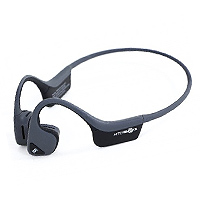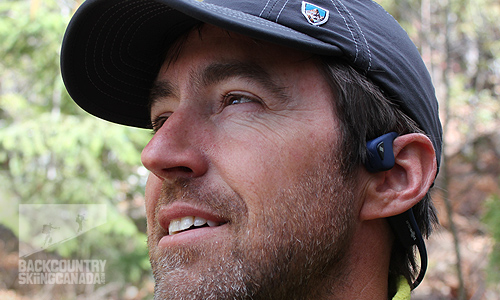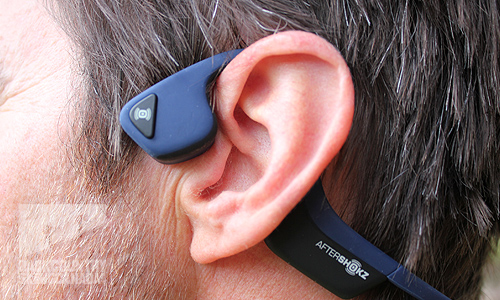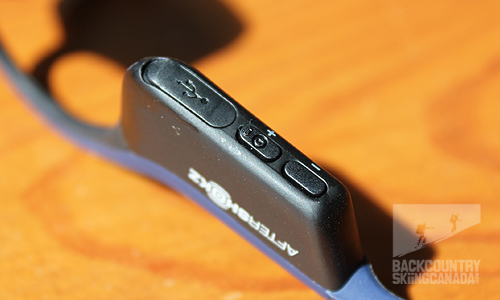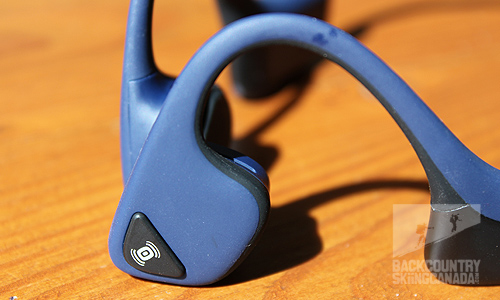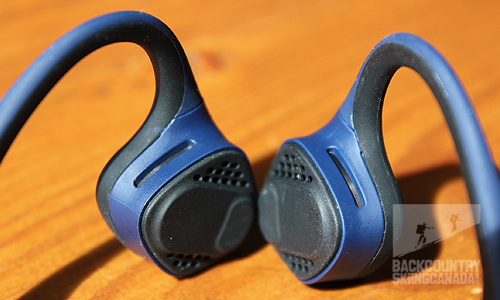


SITE LOGIN
- REVIEWS
- NEWS
- STORE
- ROUTES
- LODGING
-
VIDEOS
- 2022/23 Gear Reviews
- 2021/22 Gear Reviews
- 2020/21 Gear Reviews
- 2019/20 Gear Reviews
- 2018/19 Gear Reviews
- 2017/18 Gear Reviews
- 2016/17 Gear Reviews
- 2015/16 Gear Reviews
- 2014/15 Gear Reviews
- 2013/14 Gear Reviews
- 2012/13 Gear Reviews
- 2011/12 Gear Reviews
- 2020 Outdoor Retailer
- 2019 Outdoor Retailer
- 2018 Outdoor Retailer
- 2017 Outdoor Presscamp
- 2017 Outdoor Retailer
- 2016 Outdoor Presscamp
- 2016 Outdoor Retailer
- 2015 SIA Show
- 2014 Outdoor Retailer
- 2013 SIA Show
- 2012 Outdoor Retailer
- Tips and Tricks
- Backcountry Skiing
- SAFETY
- ABOUT
- REVIEWS
- NEWS
- STORE
- ROUTES
- LODGING
-
VIDEOS
- 2022/23 Gear Reviews
- 2021/22 Gear Reviews
- 2020/21 Gear Reviews
- 2019/20 Gear Reviews
- 2018/19 Gear Reviews
- 2017/18 Gear Reviews
- 2016/17 Gear Reviews
- 2015/16 Gear Reviews
- 2014/15 Gear Reviews
- 2013/14 Gear Reviews
- 2012/13 Gear Reviews
- 2011/12 Gear Reviews
- 2020 Outdoor Retailer
- 2019 Outdoor Retailer
- 2018 Outdoor Retailer
- 2017 Outdoor Presscamp
- 2017 Outdoor Retailer
- 2016 Outdoor Presscamp
- 2016 Outdoor Retailer
- 2015 SIA Show
- 2014 Outdoor Retailer
- 2013 SIA Show
- 2012 Outdoor Retailer
- Tips and Tricks
- Backcountry Skiing
- SAFETY
- ABOUT
TOP VIDEOS
When it comes to technology, innovation is a must to ensure success—but user experience is a close second. AfterShokz knows this and it's why their Trekz Air OpenFit earphones are a Gear Of The Year winner. While the bone conduction audio will blow your mind the solid design and secure fit will impress as well. After trying these you'll never look at personal audio the same way again.
The Backcountry Skiing Canada Team.
AfterShokz Trekz Air
Earphones come in two varieties, wired and wireless. That is until now. Now we have a third category called 'OpenFit’ or ‘open ear’ which uses bone conduction technology, effectively delivering sound through your cheekbones. You read that right. Audio vibrations are picked up through your cheekbones bypassing the outer and middle ear (where the eardrum is located) and stimulate the inner ear (hearing organ) directly. This leaves you free to take in ambient sounds like a car horn, conversation or an important alert that you simply can’t miss. This technology is not new, however, as it’s been implemented in hearing aids since 1977. The military was also an early adopter of the technology, for obvious reason. Now, bone conduction is gaining traction in the outdoor adventure realm thanks to its benefits for cyclists, hikers and city folks alike.
Fun fact: Bone conduction is also why your voice sounds different when you hear a recorded version of it versus when you say it. Your skull conducts lower audio frequencies better than air, so you perceive your own voice to be lower and fuller than others do.
Light, small and unobtrusive, the AfterShokz Trekz Air allow you to hear your surroundings as well as your music.
- SHOW THE REST OF THE REVIEW / PHOTOS / VIDEOS
-
AfterShokz manufacturers two bone conduction headphones, the Trekz Air and Trekz Titanium. Each solves two issues that frustrate traditional in-ear headphone users, dealing with tangled cords and earbuds fall out of your ears when you’re active. Wireless headphones such as the Jaybird Bluebuds X and BlueAnt Pump HD Sportbuds that we’ve previously reviewed do away with the cord issue but not the second problem. AfterShokz’s Trekz Air headphones (which we’ll focus this review on) have no cords and rest outside your ears, just in front over the base of your cheekbones leaving you free to also hear your surroundings. While blocking-out ambient noise is the best way to immerse yourself in an audio experience, it does expose you to potential dangers while walking in a busy city or on backcountry trails.
The on/off and audio controls are positioned under the right side battery and are easy enough to figure out, on the left side there is a multi-functional button which allows you to play, pause, skip audio and also answer phone calls. At only 30 grams the Trekz Air are really light and their silicone coated design is durable and sweat proof. The titanium band that joins the two pods is somewhat flexible and helps keep them in place no matter the activity you are enjoying. I’ve used the Trekz Air for biking, running, hiking and working out, without any issue of them moving or getting in the way. They fit seamlessly with sunglasses or a bike helmet so you can integrate them into pretty much any activity.
With Bluetooth 4.1 technology, you can pair the AfterShokz Trekz Air seamlessly with multiple devices and if you phone is on and previously paired all you need do is turn on the Trekz Air’s and they automatically pair with a confirmation from Audrey, who’s your in ear assistant.
AfterShokz’s Trekz Titanium are a slightly less expensive version of the Trekz Air, weighing 6 grams or 20% more and with only 1/2 the standby time and a less fancy storage case. At $129.95 they are a $60 savings over the AfterShokz Trekz Air but also provide less sound quality.Features:
- Bone conduction technology delivers music through your cheekbones, ensuring ears remain completely open to hear ambient sounds
- A 20% lighter build than its counterpart
- A new organic design delivers increased comfort
- Complete wraparound titanium design provides a flexible fit for unnoticeable all-day comfort and stability
- OpenFit™ design ensures maximum situational awareness and comfort during long-term wear
- PremiumPitch+™ guarantees a premium audio experience, including wide dynamic range and rich bass
- Bluetooth® v4.2 connectivity and convenient multipoint pairing
- LeakSlayer™ technology significantly reduces natural sound leakage
- IP55 certified to repel sweat, dust and moisture, from workouts to wicked weather
- Enjoy six hours of continuous music + calls on a single charge
- EQ presets boost bass and reduces vibration on the go
- Dual noise canceling microphones exclude surrounding noise, effectively enhancing speech
- Audrey Says™ voice prompts guides users through power, pair, play and talk
- Hassle-free 2-year warranty
What's included in the box, AfterShokz Trekz Air, charging cable, soft case, and ear plugs.
Small and compact... and no, they don't go in your ears.Verdict:
Having had enough of constantly untangling traditional ear buds over the years, I finally switched to using wireless. Initially, I was happy with the convenience of them but ultimately I was not happy with either the Jaybird Bluebuds X or BlueAnt Pump HD Sportbuds as both kept falling out of my ears. I stumbled upon the AfterShokz Trekz Air at the Winter Outdoor Retailer Show and gave them a brief test at the AfterShokz booth. I was impressed with the audio quality and convinced instantly that I needed to test them further.
While I’m impressed with the overall sound quality of the Trekz Air (especially given that the audio is transmitted through my rather thick skull), they don’t replicate the rich, immersive clarity and strong bass you get from in-ear headphones. High and mid-tone frequencies are strong, while the bass tones are lacking. Unless you are true music snob the quality of the Trekz Air will satisfy most listeners.
The benefits of the Trek Air’s are comfort and the ability to hear ambient noise. The titanium loop joining the left and right pods is unobtrusive, thin and light and the headset stays perfectly positioned, no matter my activity. Situational awareness while biking, hiking or walking in the city is a huge bonus as you can still hear all of the surrounding sounds while enjoying your music, podcast or taking part in a phone conversation. Should you need to talk with someone in real life and focus 100% on the conversation then the audio pause button is easily accessible to momentarily stop the audio.
Given how loud and crisp the audio is, you’ll swear that everyone around you can hear your music, but of course they can’t unless you are in a very quiet environment and you have the AfterShokz cranked.
With 6 hours of battery life I’ve found the AfterShokz Trekz Air are adequate for my use patterns but if you plan on enjoying your music all day then you may find this limiting. While this battery life is on par with other wireless devices it could be improved, this, however, would come at a cost to weight.
Overall, I’m a convert. With ease of use, comfort and fairly good audio quality, plus the ability to use the Trekz Air biking, at the gym and on the trails while still taking in my surroundings, well, it’s a no brainer, they’re the only headphone I use now.
 |
PROS:
|
 |
CONS:
|
SPECS:
Price: $189.95CAN / $179.95US
Colours: Slate Grey, Midnight Blue, Forest Green
Weight: 30g / 1.06oz
Frequency response: 20Hz~20KHz
Sensitivity: 100 ± 3dB
Compatible profiles: A2DP, AVRCP, HSP, HFP
Wireless range: 33 ft (10m)
Battery: rechargeable lithium ion
Charge time: 2 hours
Continuous play: 6 hours
Standby time: 20 days
RATING: 9/10
| Technology/Innovation 2/2 Fit 2/2 Sound 1.5/2 Function 1.5/2 Price / Quality 2/2 |
Did we miss something? Are we totally out to lunch? Let us know what you think. People like/dislike gear for different reasons so chime in below and we'll get a well-rounded evaluation. You'll need to login or register before you can comment but it only takes a few seconds, then you're good to go.
Leave a Comment:
Copyright © 2009-25 Backcountry Skiing Canada. All Rights Reserved.








